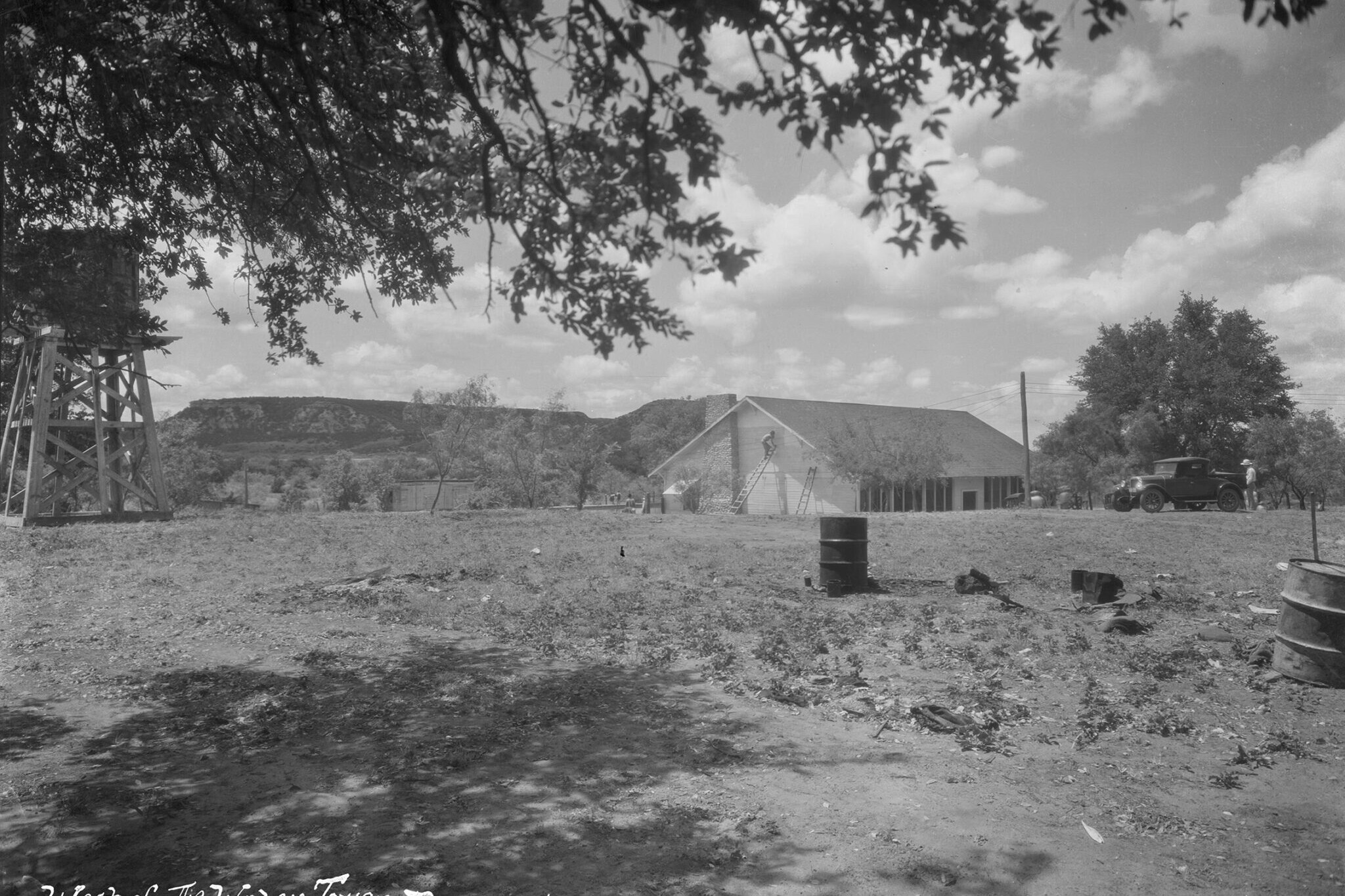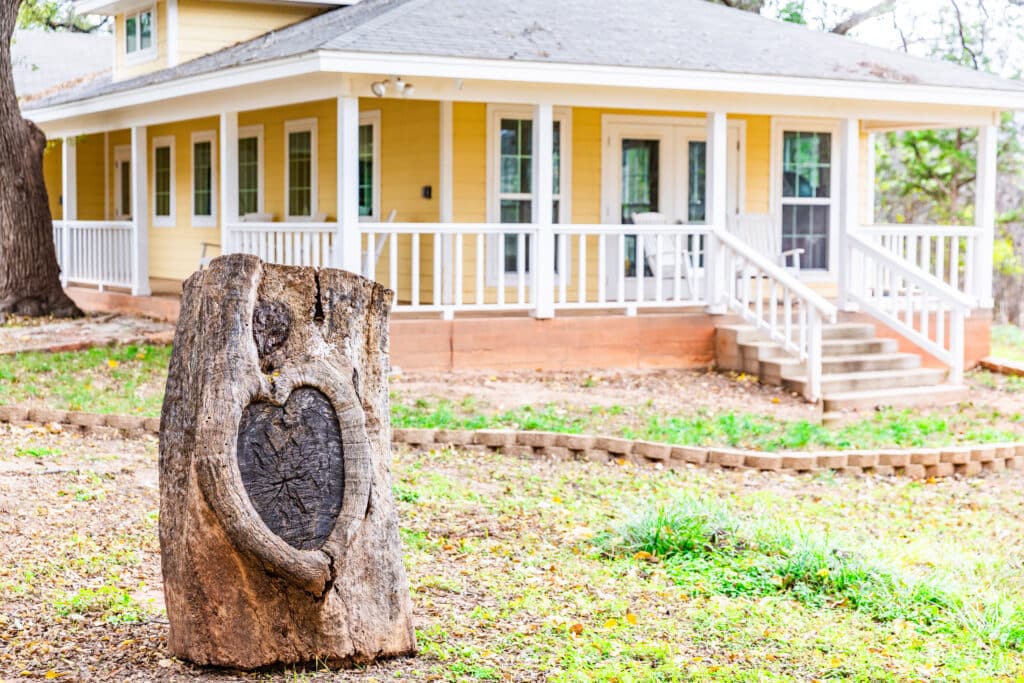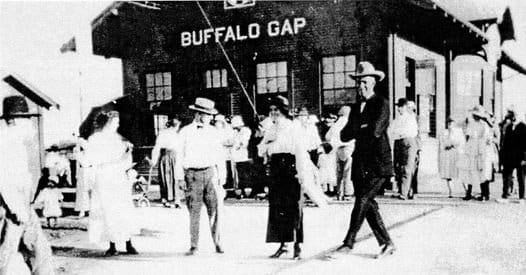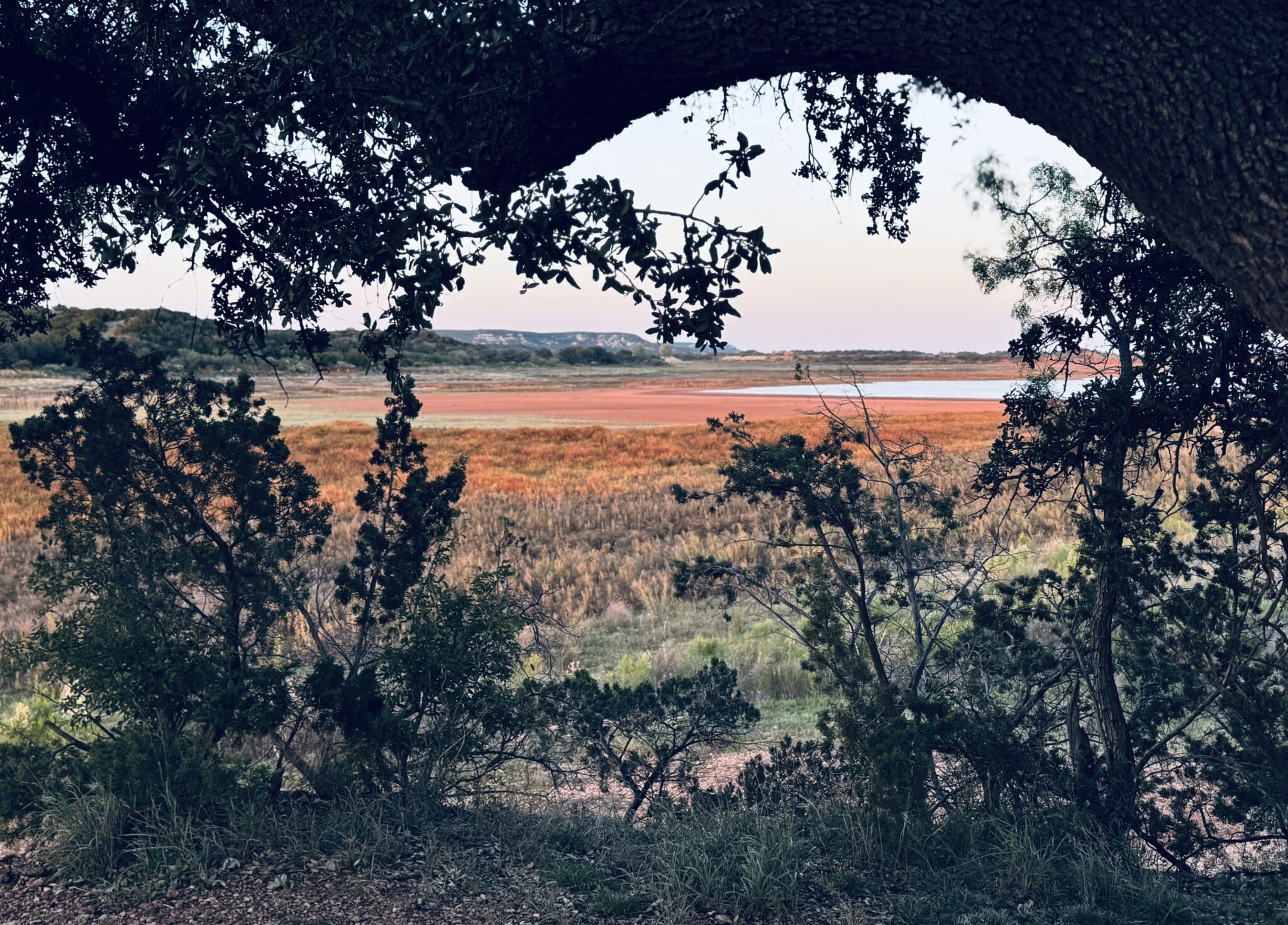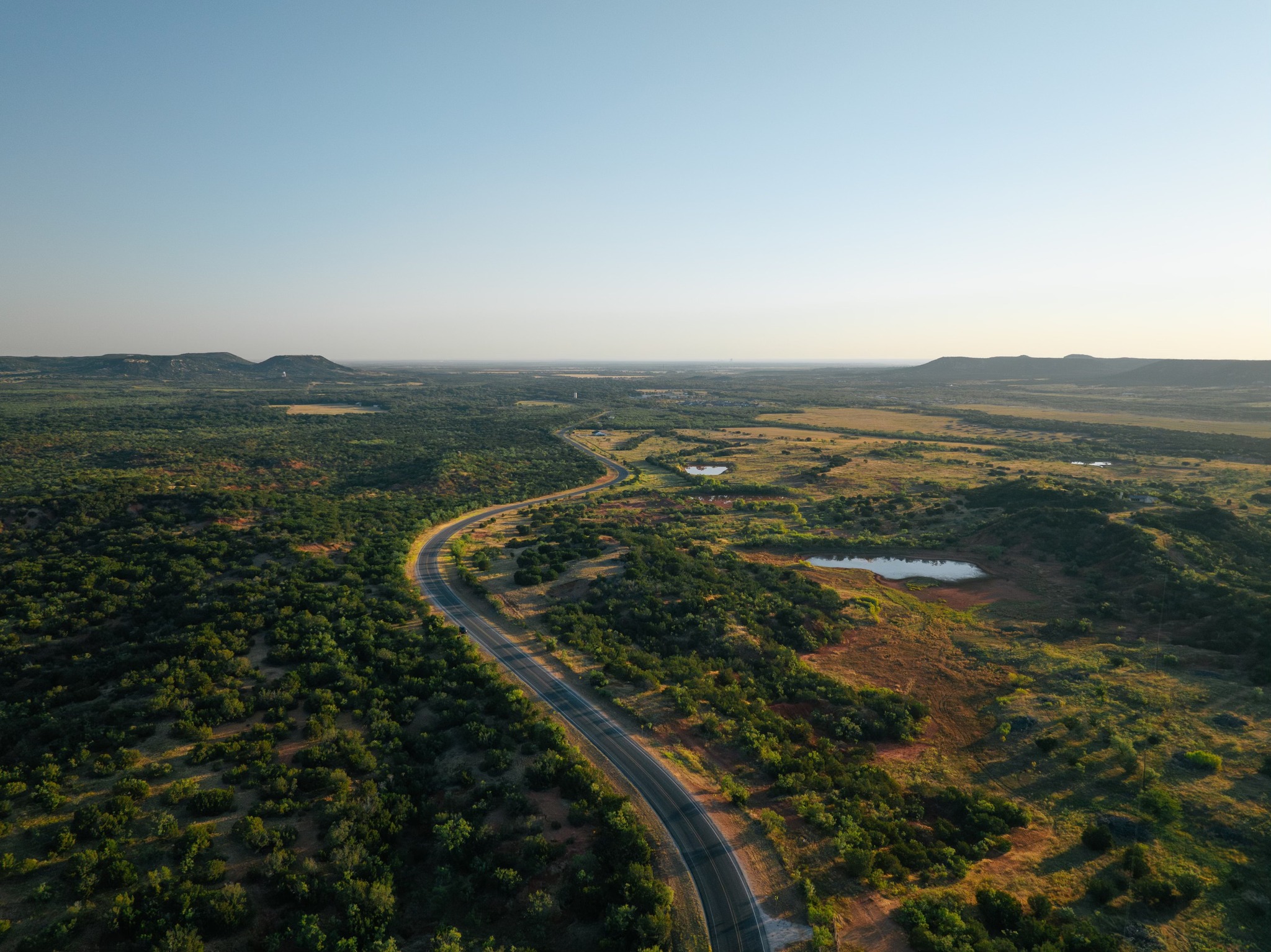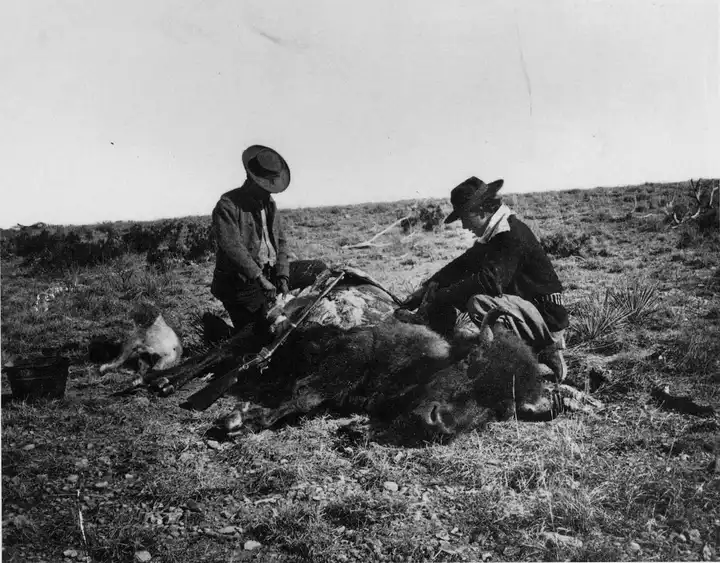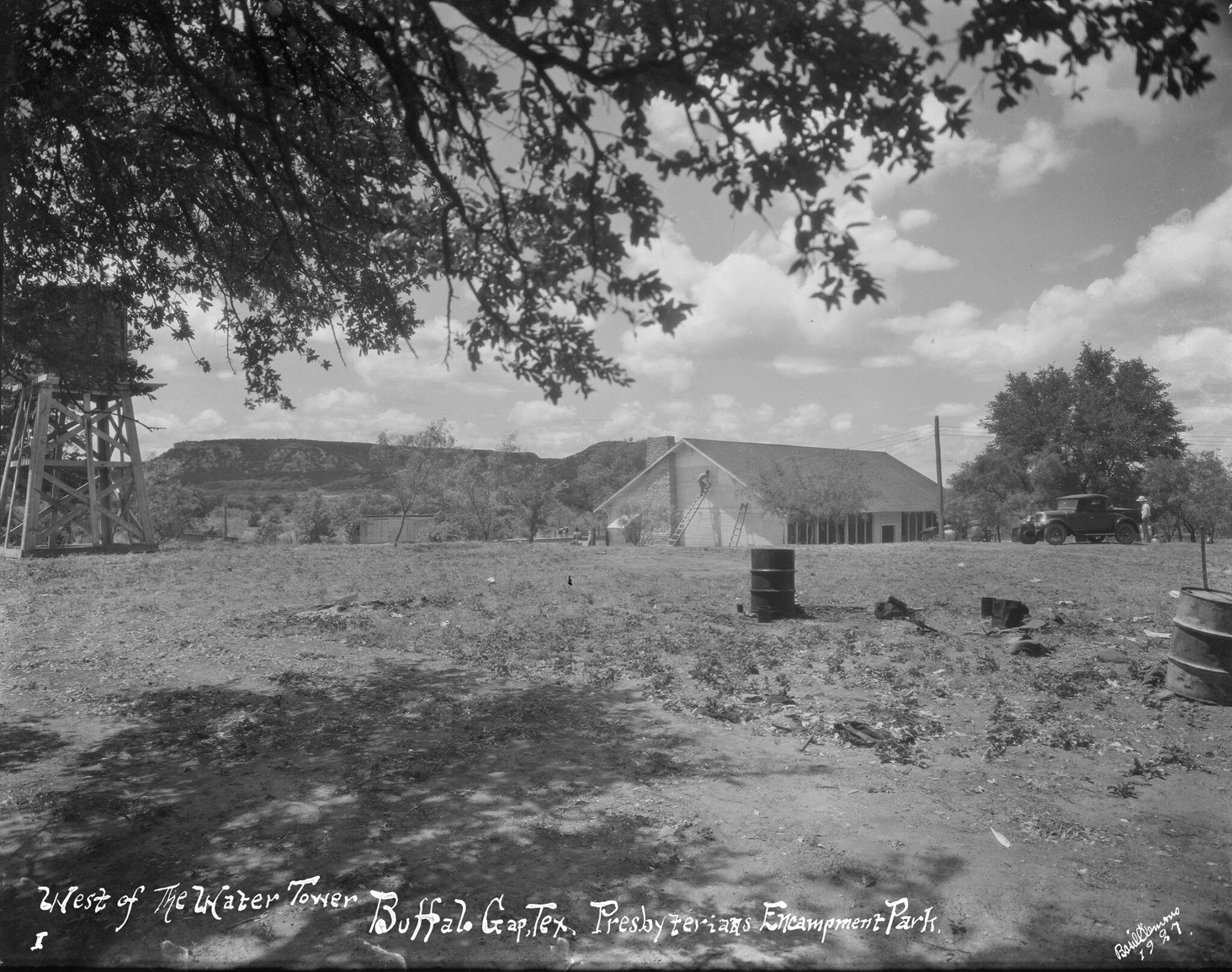The Reddell House Audio Tour
Buffalo Gap Heritage Audio Tour
The Reddell House
Next Location: Buffalo Gap Hardware & Supply
Location
Transcription
In a town filled with history, few places tell Buffalo Gap’s story quite like the Reddell House. Built in the late 1800s, this home has seen ranchers, travelers, and business owners come and go, its walls absorbing the stories of a changing town.
The Reddell family was deeply involved in Buffalo Gap’s growth. Their home was more than just a residence—it was a meeting place, a safe haven, and a symbol of prosperity at a time when the town was still young.
Over the years, the house was expanded and remodeled, but much of its original structure remains. Hand-made wooden beams, period furnishings, and historical photographs still tell the story of the people who lived here.
Fun Fact: Some say the Reddell House has its own friendly ghost—a former resident who still “keeps an eye” on the home. Guests have reported feeling a light tap on the shoulder or hearing unexplained whispers in empty rooms!
Today, the Buffalo Gap Historic Village preserves the Reddell House as a window into the past. Visitors can step inside and experience what life was like in Buffalo Gap’s early days.
If these walls could talk, what stories would they tell? Perhaps they’d speak of family dinners, quiet evenings by lamplight, or the changing times of a growing town. As our tour comes to a close, we hope you’ve gained a deeper appreciation for Buffalo Gap’s rich history. Thank you for joining us—and don’t forget to explore more of what this special town has to offer!


Buffalo Gap Shoot-Out Audio Tour
Buffalo Gap Heritage Audio Tour
The Buffalo Gap Shoot Out
Next Location: The Reddell House (address at bottom of page)
Location
Transcription
Buffalo Gap was no stranger to frontier justice, and in 1919, this quiet town became the backdrop of a real-life Wild West shootout.
It all started on the night of March 5, 1919, when four men robbed the First State Bank of Winters, making off with cash, Liberty Bonds, and other valuable papers. As they fled, luck was not on their side. Their getaway car—a Hudson Super-Six—broke down south of Tuscola, forcing them to continue on foot toward Buffalo Gap.
Desperate for another vehicle, the robbers stole a Model T Ford belonging to Mrs. Fisher, the superintendent of Buffalo Gap School. She had parked it under a large oak tree near the Nazarene Church. Unfortunately for them, the Model T had a crank-start system, and they struggled to get it going.
Meanwhile, three Winters lawmen, tracking the robbers, arrived in Buffalo Gap around 9:30 PM. They spotted four men beside a stalled car near the Nazarene Church, located at Mulberry and Oak Street. The officers, believing these men were simply having car trouble, offered to help. It wasn’t until the officers left and circled back that they realized something wasn’t right.
As the officers approached again, the suspects panicked, scattering in different directions. Gunfire erupted, and in the chaos, one officer was grazed by a bullet while one of the robbers was seriously wounded. The wounded man was quickly captured, while the other three robbers vanished into the night.
Fun Fact: The Nazarene Church, where the shootout took place, was known as the “Sweet Church” due to the bees living in its walls. The building has since been moved to the Buffalo Gap Historic Village, but at the time, the lawmen may have had to dodge more than just bullets!
By morning, all three fugitives had been caught, with each man claiming to know nothing about the robbery. The wounded man, meanwhile, was taken to Hollis Sanitarium in Abilene by mail bus.
He underwent surgery to remove a bullet, but even with $3,000 in stolen Liberty Bonds found in his possession—bearing the names of Winters residents—he never confessed to the crime. He later died from his injuries, taking his secrets with him.
The other three suspects were transported to jail in Ballinger, where they continued to deny any involvement. But the evidence against them was strong, and the shootout became one of the most dramatic moments in Buffalo Gap’s history.
If you stand still and listen, you might hear the echoes of that fateful night—the shouts, the shots, and the last desperate escape. Now, let’s visit one of Taylor County’s longest standing homes—The Reddell House.

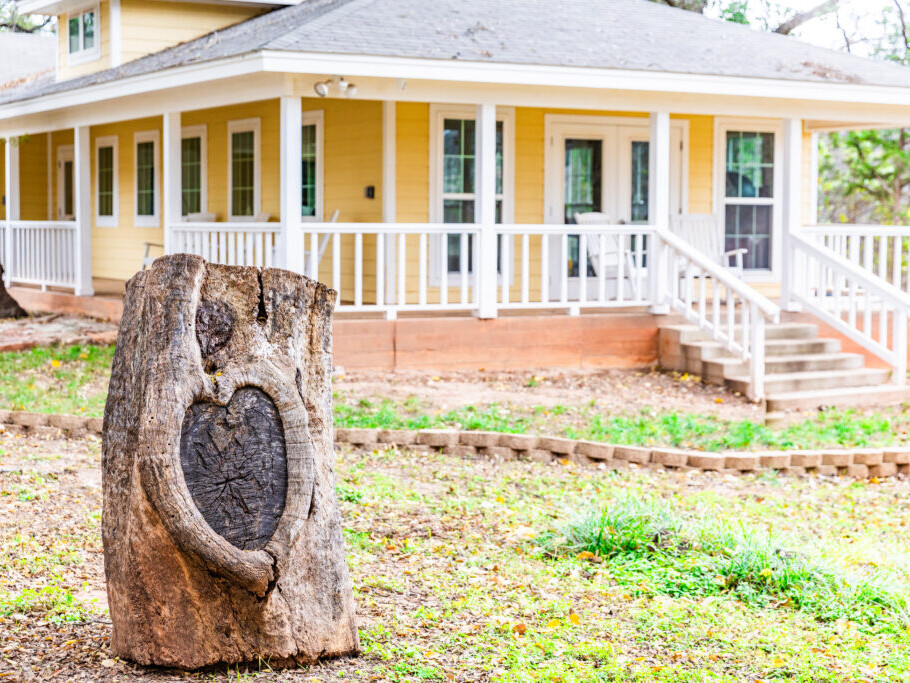
Buffalo Gap Main Street Audio Tour
Buffalo Gap Heritage Audio Tour
Buffalo Gap Main Street
Next Location: The Shootout (address at bottom of page)
Location
Transcription
Imagine walking down Main Street Buffalo Gap in the late 1800s. Instead of parked cars, you’d see horses and wagons lining the road. Instead of modern storefronts, there were wooden buildings with hitching posts and bustling businesses.
At the height of Buffalo Gap’s growth, this street was the heart of town. Businesses like the Red & White Grocery, The Lyon Hotel, and the Buffalo Gap Banking Company served settlers, travelers, and ranchers.
The Red & White Grocery was part of a chain of independently owned food stores operating across the United States and Canada. Established around 1925, these stores allowed small-town grocers to compete with larger chains by providing centralized buying and distribution.
In Buffalo Gap, the Red & White Grocery was more than just a place to buy goods; it was a community hub where neighbors met and shared news. The store’s signature red dot logo became a familiar sight, symbolizing both quality and local enterprise.
Another cornerstone of Main Street was The Lyon Hotel, built in 1910 by W.T. Bull. This two-story structure boasted 14 rooms and quickly gained a reputation for its hospitality and superb chicken dinners. Notably, Governor Dan Moody is said to have had his wedding breakfast there.
In July 1923, the hotel hosted the six-member board responsible for selecting the location of Texas Technological College. Despite Captain Robert Craig Lyon’s hopes, the board chose Lubbock over Buffalo Gap.
The hotel ceased operations before World War II and later served as a boarding house until about 1952. In 1958, Henry Galloway purchased the property and converted it into a residence, a function it still serves today.
The Buffalo Gap Banking Company opened its doors in 1918, following the closure of a predecessor bank. Despite its initial promise, the bank closed in 1923, and its rich furnishings were transferred to a new bank in Bradshaw. These fixtures were returned to Buffalo Gap in 1982 and are now displayed at the Buffalo Gap Historic Village, offering a tangible connection to the town’s financial past.
Fun Fact: Did you know that Buffalo Gap was once a stop for traveling salesmen who set up temporary storefronts right on Main Street? They would sell everything from sewing machines to snake oil remedies!
By the early 1900s, as Abilene grew, Buffalo Gap’s importance as a business hub faded. But standing here today, you can still sense the town’s frontier past.
If you listen closely, you might still hear the echoes of horse hooves and train whistles. Now, let’s head to a more notorious part of town—the site of Buffalo Gap’s infamous 1919 shoot-out
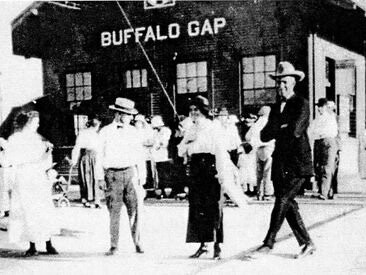
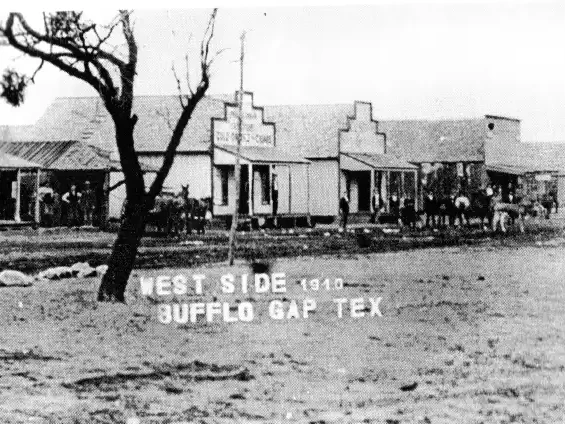
Abilene State Park Audio Tour
Buffalo Gap Heritage Audio Tour
Abilene State Park
Next Location: Main Street (address at bottom of page)
Location
Transcription
If you’re looking for a place where history and nature meet, Abilene State Park is it. Nestled among the oaks along Elm Creek, this park has been a retreat for campers, hikers, and outdoor lovers since the 1930s, but its story began long before that.
Archaeological evidence suggests that humans have occupied this land for at least 6,000 years. The Tonkawa and Comanche tribes used the area as hunting grounds, tracking buffalo and setting up seasonal camps along the water’s edge. They relied on the abundant wildlife, fresh water, and thick groves of trees for survival.
When settlers arrived in the late 1870s, they saw the same natural resources and began farming the bottomlands and raising livestock on the uplands. But this settlement was short-lived.
In 1918, the City of Abilene built a dam on Elm Creek to create Lake Abilene, hoping it would provide a reliable water source for the growing town.
Unfortunately, the lake proved unreliable—by 1927, it had completely dried up. Today, it serves purely for recreation, offering opportunities for fishing, kayaking, and birdwatching.
The land for Abilene State Park was acquired in 1933, and its transformation was thanks to the Civilian Conservation Corps (CCC)—a Great Depression-era program that provided jobs while improving public lands. These hardworking men cleared roads, built picnic shelters, and constructed the now-iconic stone swimming pool, water tower, and concession stand using local limestone and red sandstone.
Fun Fact: The swimming pool at Abilene State Park was one of the largest built by the CCC. It’s so deep that early lifeguards would sometimes dive for coins that children tossed in for fun!
Abilene State Park is also a meeting point of two distinct Texas landscapes—the Rolling Plains and the Edwards Plateau, creating a diverse habitat for whitetail deer, raccoons, armadillos, fox squirrels, and cottontail rabbits. Birdwatchers can spot everything from Mississippi kites and roadrunners to hummingbirds and northern cardinals.
The park offers camping sites, picnic shelters, hiking trails, and even a historic bird blind where visitors can observe local wildlife. With over 500 acres of natural beauty, it continues to be a peaceful escape for locals and visitors alike.
Whether you’re here for a hike, a picnic, or a quiet moment by the creek, this park connects you to the land’s deep history. Now let’s head back into city limits and take a virtual walk down Main Street Buffalo Gap and see what’s left of its bustling past.
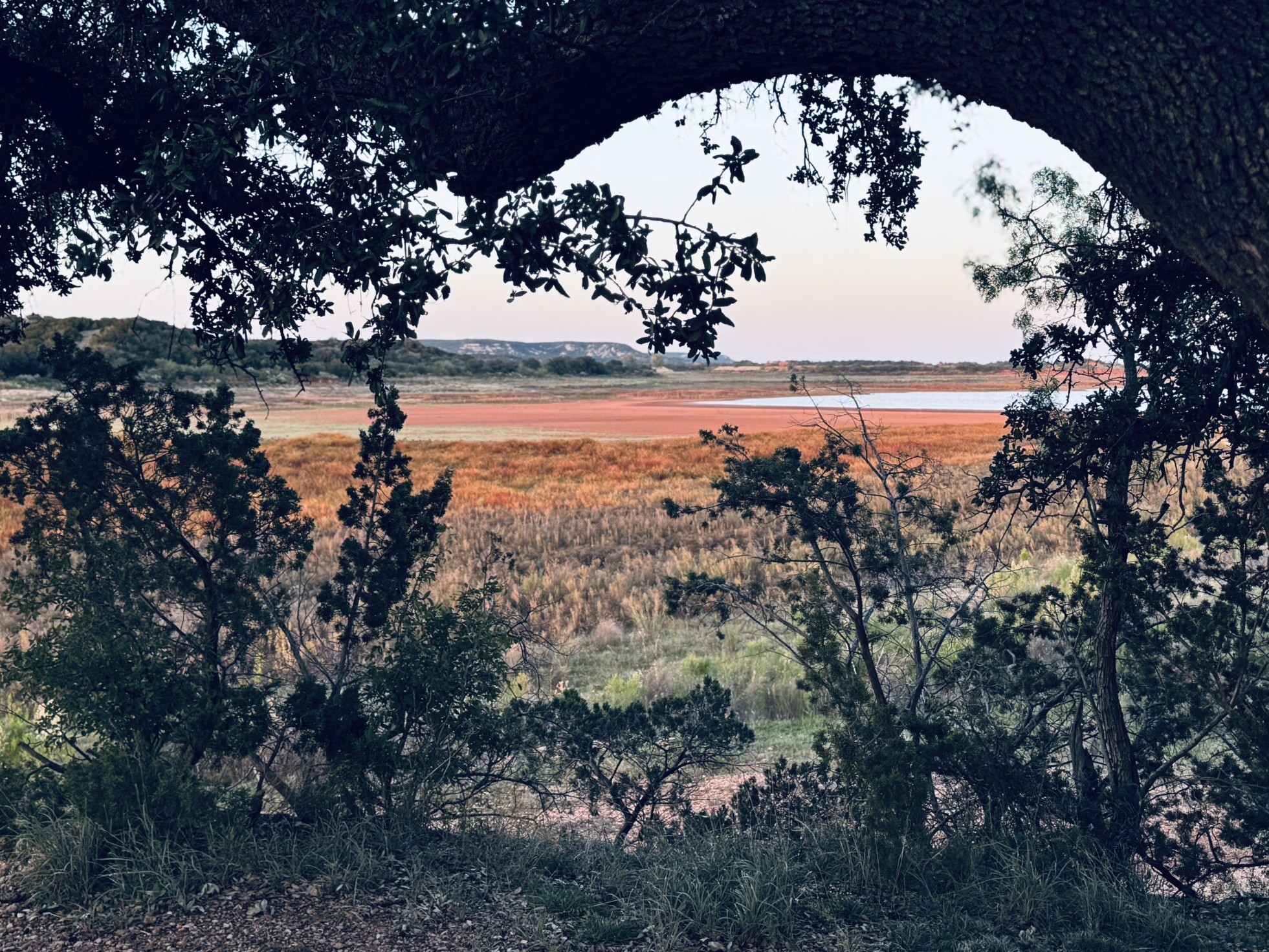
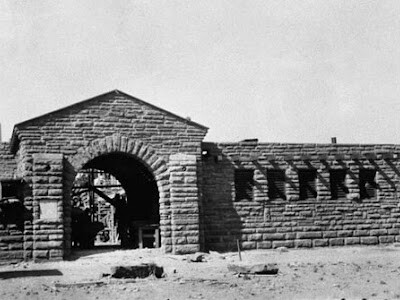
Camp Tonkawa Audio Tour
Buffalo Gap Heritage Audio Tour
Camp Tonkawa
Next Location: Abilene State Park (address at bottom of page)
Location
Transcription
Nestled under the sprawling canopies of ancient oak trees in southern Taylor County, Camp Tonkawa stands as a testament to the enduring spirit of scouting and outdoor education.
Established in 1929, this camp has been a sanctuary for scouts, nature enthusiasts, and various community groups, fostering a deep connection to nature and imparting invaluable life skills.
Over the decades, Camp Tonkawa has evolved to accommodate a wide range of activities and groups.
Beyond serving as a hub for Cub Scouts and Boy Scouts, the camp’s facilities have welcomed organizations such as 4-H, YWCA, Big Brothers/Big Sisters, and Hunter Safety Education programs.
These collaborations have enriched the camp’s legacy, making it a cornerstone of community engagement and youth development.
For scouts, Camp Tonkawa offers a rich tapestry of experiences. Cub Scouting events like the Haunted Forest, Cub Scout Day Camp, and Family Camp provide young scouts with opportunities to immerse themselves in the outdoors, fostering camaraderie and building foundational skills.
The camp’s name, Tonkawa, pays homage to the Tonkawa tribe, indigenous people who once roamed these lands.
This acknowledgment serves as a reminder of the rich cultural history of the region and the importance of preserving and respecting the heritage of those who came before.
If you listen closely, you can almost hear the crackling of a campfire and the laughter of scouts telling ghost stories.
Now, let’s explore another place where people have long gathered—Abilene State Park.

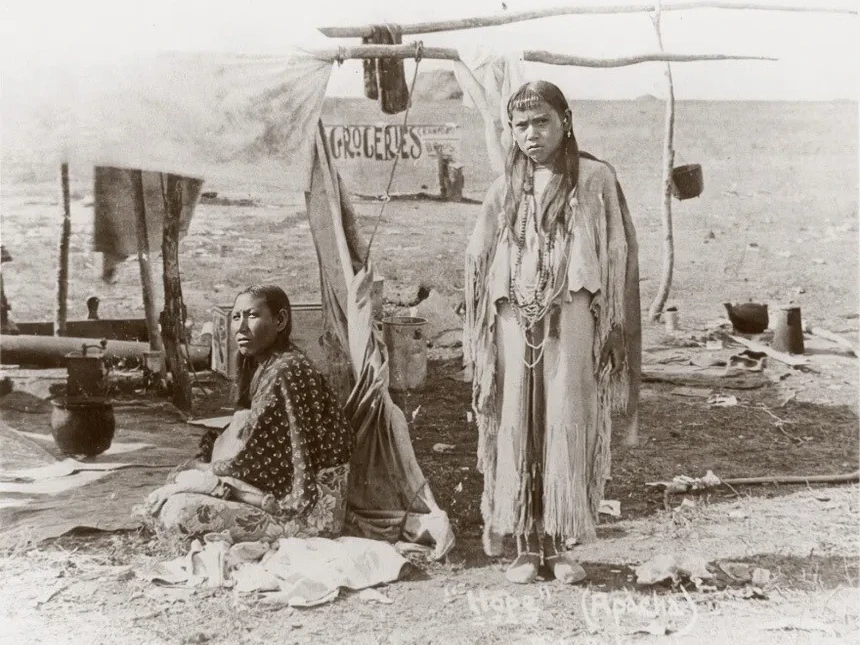
Buffalo Gap Cemetery Audio Tour
Buffalo Gap Heritage Audio Tour
Buffalo Gap Cemetery
Next Location: Camp Tonkawa (address at bottom of page)
Location
Transcription
Cemeteries are more than just resting places—they are living records of the past. The Buffalo Gap Cemetery, established in the late 1800s, is the oldest public cemetery in Taylor County and serves as a final resting place for generations of settlers, pioneers, and influential figures who helped shape this community.
Here, you’ll find the graves of buffalo hunters, Civil War veterans, and early settlers. Some names are well-known, others are lost to history. Many headstones bear simple inscriptions—just a name and a date—while others tell fuller stories, etched into stone for future generations to read.
One unusual part of the cemetery’s history came in 1919, when Lake Abilene was built. The town of Bethel had to be relocated, including its cemetery. Many of those graves were moved here to Buffalo Gap Cemetery, preserving their memory even as their original resting place disappeared beneath the lake.
Among the most notable figures in this cemetery is Mabel Reynolds, one of Buffalo Gap’s best-known schoolteachers. She dedicated her life to educating the youth of the town, leaving behind a legacy that is still felt today. Her students, many of whom became leaders and professionals, carried her teachings with them far beyond Buffalo Gap.
Another key figure tied to this site is Mrs. Maxine Perini, whose name is well-known in the Buffalo Gap community. In 1965, she oversaw the construction of the small stone chapel that stands within the cemetery. This quiet retreat was meant to give visitors a place to reflect and find peace, no matter the weather. The chapel continues to serve as a gathering place for those paying respects to loved ones and honoring the history of Buffalo Gap.
If you look closely, you’ll see hand-carved tombstones, some barely legible from weathering over the years. Some graves belong to entire families, while others mark the final resting place of those who died alone on the frontier. Each spring, wildflowers bloom across the cemetery, bringing color and life to a place dedicated to remembrance. It’s a quiet reminder that while people pass on, their legacies remain in the land they shaped.
As you walk through the cemetery, take a moment to reflect on the stories here—the lives lived, the hardships faced, and the history preserved. Now, let’s travel to a place where adventure and survival skills were taught for generations—Camp Tonkawa.
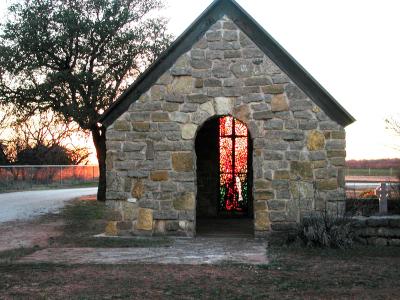
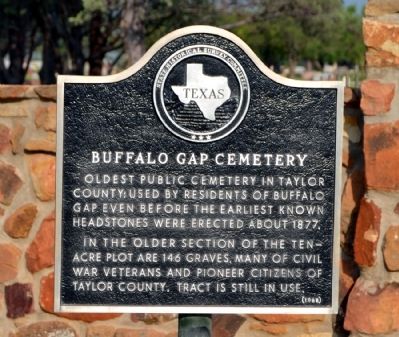
The Abilene Man Audio Tour
Buffalo Gap Heritage Audio Tour
The Abilene Man
Next Location: Buffalo Gap Cemetery (address at bottom of page)
Location
Transcription
When you think of early Texans, you might picture cowboys or settlers, but long before them—thousands of years ago—this land was home to some of the earliest humans in North America.
In 1934, archaeologists unearthed stone tools and artifacts near Lytle Creek, just outside Abilene. These tools were over 10,000 years old, placing their makers among the earliest known inhabitants of Texas.
The discovery was named “Abilene Man,” though no human remains were found—just evidence of their tools and hunting practices.
These early people were nomadic hunters, likely tracking mammoths, giant bison, and other Ice Age creatures across the plains.
Their survival depended on their skill in making weapons, their knowledge of the land, and their ability to adapt to a harsh, ever-changing environment.
Standing here today, it’s hard to imagine a time when massive ice sheets covered North America and early humans hunted with handcrafted spears and flint knives. But the evidence remains—buried beneath the soil, waiting to tell its story.
The landscape may have changed, but history is still all around us. Now, let’s visit a place where some of Buffalo Gap’s earliest settlers found their final resting place—the Buffalo Gap Cemetery.
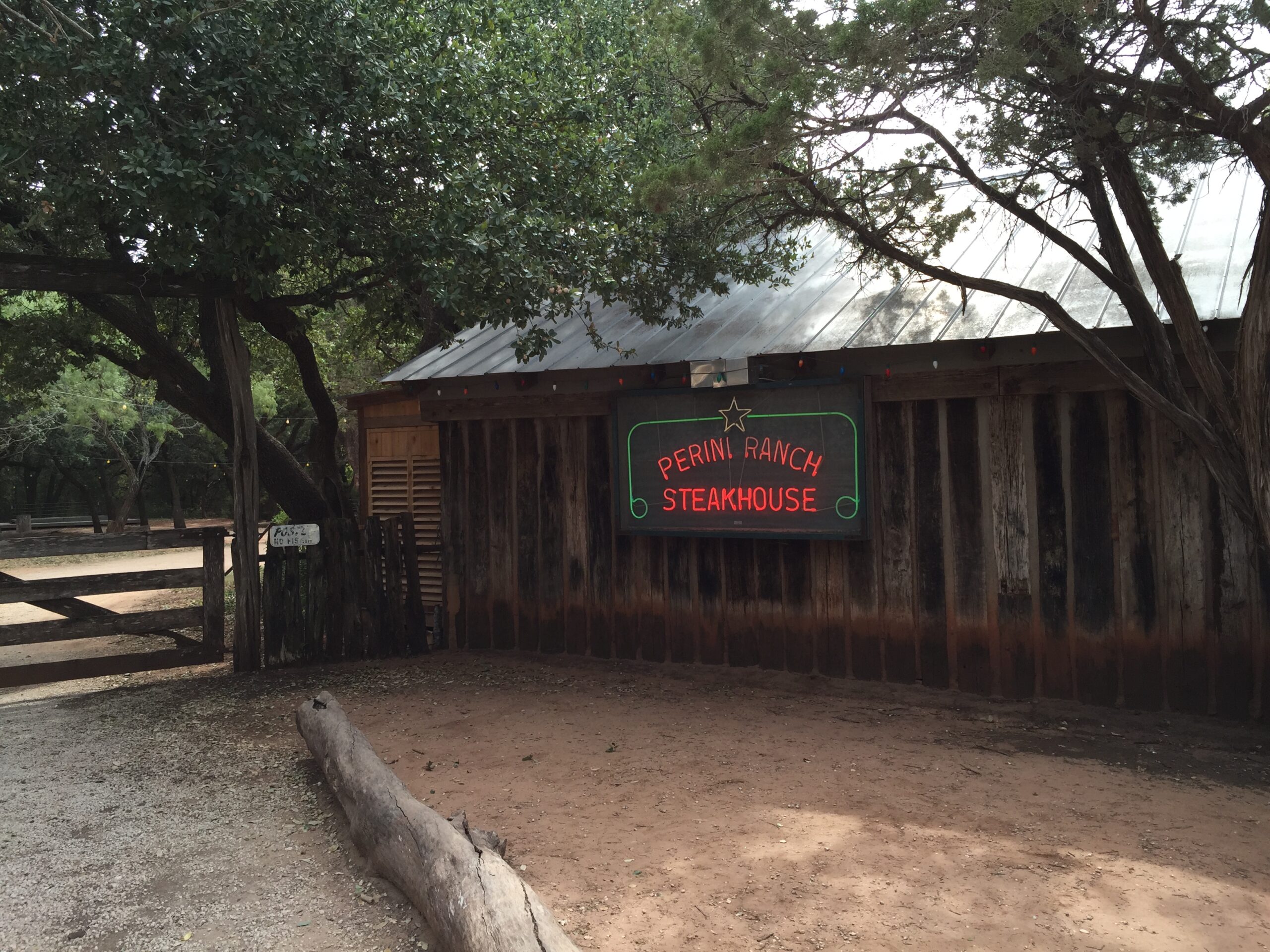

The Buffalo Hunters Audio Tour
Buffalo Gap Heritage Audio Tour
The Buffalo Hunters
Next Location: The Abilene Man (address at bottom of page)
Location
Transcription
Before Buffalo Gap had schools, churches, or businesses, it had something else—buffalo hunters.
These rugged frontiersmen were the first non-Native settlers in the area, drawn by the vast herds of bison that once covered the gap in the Callahan Divide that you see in the distance before you.
In the 1860s and 1870s, buffalo hunters made winter camps in this gap in the mesas, taking advantage of the natural landscape for protection from the harsh weather.
The Comanche and Kiowa tribes had long hunted these same lands, relying on the buffalo for food, clothing, and shelter.
But as the railroad stretched across the country, the demand for buffalo hides skyrocketed, turning what had once been a way of life into an industry.
By the 1870s, the buffalo trade was booming.
Hunters, working in groups, used powerful Sharps rifles to take down dozens—sometimes hundreds—of bison in a single day.
The hides were the real prize, stacked high, salted, and shipped east to be turned into coats, belts, and industrial leather goods.
The hunters worked fast, often skinning the animals where they fell, leaving behind massive fields of bones that would later be collected and sold for fertilizer.
Fun Fact: According to the Texas State Historical Association, by 1878, the Southern Plains herd had nearly vanished.
This period became known as the “great slaughter”, wiping out the once-massive buffalo population in just a few short years.
But this boom had a price. Without the buffalo, the Indigenous tribes that depended on them for survival were forced onto reservations.
Many hunters, now out of work, moved on to other trades, and Buffalo Gap began its transformation into a ranching town.
Yet, life as a buffalo hunter was not for the faint of heart.
The men who braved the frontier faced harsh elements, the constant threat of attacks from Indigenous warriors defending their lands, and the grueling labor of skinning and hauling the heavy hides.
Hunters worked in teams with skinners, who could process up to 100 buffalo in a day. The hides were separated into bull hides, cow hides, robe hides, and kip hides (from younger animals), each with a different market value.
Jefferson David Dillingham, one of the early buffalo hunters, described his first time arriving in Buffalo Gap in the late 1870s.
As he approached, he saw what he thought was a collection of houses—only to realize, as he got closer, that they were huge stacks of buffalo hides, waiting to be hauled to market. Inspired by the sight, he remained and became a hunter himself.
The small settlement of Buffalo Gap in 1875 was little more than a hunter’s camp, with men living in dugouts, skin tents, and sod houses.
Traders set up “deadfall” stores, crude supply shops where hunters could barter for whiskey, ammunition, and basic provisions.
Outro: Today, standing here at Perini Ranch Steakhouse, it’s fitting to reflect on this history.
Where buffalo once roamed, cattle now graze, carrying on the legacy of the land in a new way. The days of the buffalo hunters may be gone, but their impact on the land—and the town of Buffalo Gap—remains.
Now, let’s take a look at another fascinating discovery from the past—the story of the Abilene Man, one of Texas’ earliest inhabitants.
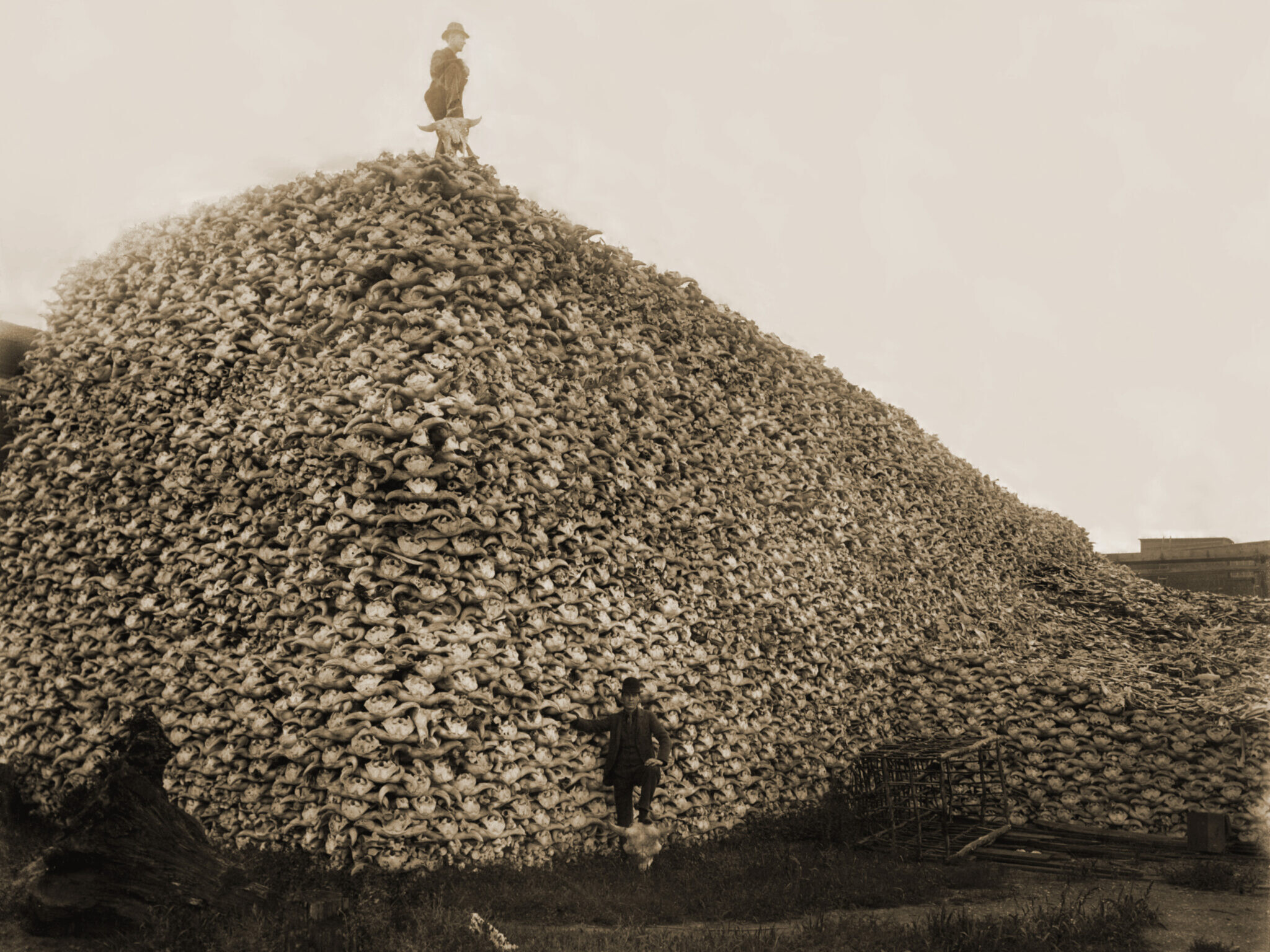

The Canary House Audio Tour
Buffalo Gap Heritage Audio Tour
The Canary House
Next Location: Buffalo Hunters (address at bottom of page)
Location
Transcription
Before public schools became common, education was often informal, held in one-room schoolhouses or even private homes. The Canary House, originally run by Miss Sallie Young, was one such school.
In the 1880s, Miss Sallie—daughter of Reverend Young, who helped establish Presbyterian College—opened her doors to Buffalo Gap’s youngest students.
She taught them their ABCs, arithmetic, and the basics of reading and writing, laying the foundation for their future education.
Unlike the larger schools that came later, her classroom was intimate, with only a handful of students at a time, many of them the children of Buffalo Gap’s first settlers.
Fun Fact: Miss Sallie called her tiny school “Canary College”, and the bright yellow paint on the house later inspired its modern name—the Canary House.
Miss Sallie was beloved in the community. Fellow teachers described her as an absolute example of unselfish service, always cheerful, happy, and known for her kindness to neighbors.
She continued to teach for decades before passing away in Tuscola, Texas, on August 1, 1920.
As Buffalo Gap grew and formal schools were built, the need for one-room classrooms like this faded.
Yet, the Canary House stands as a reminder of a time when education was personal, teachers knew every student, and learning took place anywhere it could.
Today, the Canary House is still a place of hospitality, though in a different way. It has been renovated into a charming Airbnb, where guests can still see parts of the original one-room footprint preserved inside.
The Canary House may be small, but its impact was huge. It continues to welcome visitors, just as it once welcomed eager young students.
Now, let’s head to a part of Buffalo Gap’s past that predates even the schools—the Buffalo Hunters.
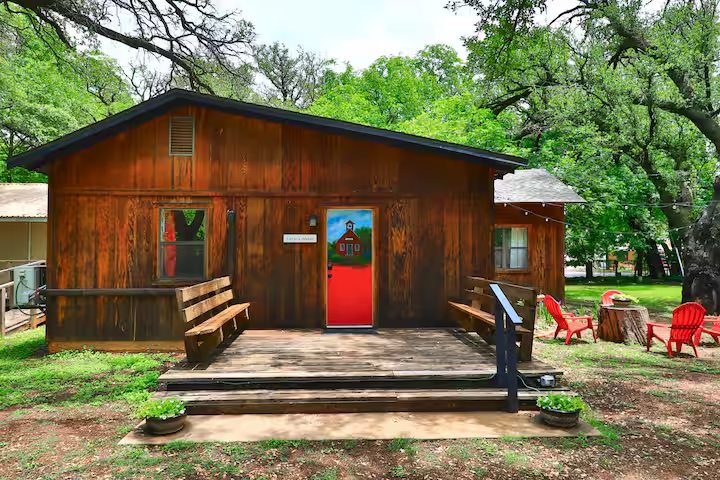
Presbyterian Encampment Audio Tour
Buffalo Gap Heritage Audio Tour
Presbyterian Encampment
Next Location: The Canary House (address at bottom of page)
Location
Transcription
Some places hold history in their walls, others in their land. The Presbyterian Encampment has been a place of faith, fellowship, and renewal for over a century.
Established in 1921, this encampment was a retreat for religious gatherings, youth camps, and Bible studies. At a time when travel was difficult and church services were scattered across small settlements, a site like this offered a rare opportunity for worship and connection. Families camped out for days, enjoying sermons, music, and shared meals under the Texas sky.
But this land’s spiritual significance predates the encampment. In 1906, the Cumberland Presbyterian Church was built here, serving as a hub for early settlers.
This church stood where the current dining hall is located. Although it was moved to a local ranch in 1961, two remnants remain—a bell in the belfry near the dining hall and the original cornerstone, which can still be seen today.
By 1889, as Buffalo Gap grew, the school here became so large that it required a two-story dormitory to house 100 female students. The dormitory was built on what is now the caretaker’s home. Unfortunately, not long after its construction, a devastating fire destroyed the building.
In its early years, encampment life was simple and rustic. Campers slept in tents, braving the hot Texas summers and chilly nights.
In 1945, surplus army barracks from Camp Barkeley were brought in and repurposed as cabins, providing more structure to the site. These remained in use until 1968, when cement block cabins were built.
Fun Fact: The original pool was dug and cemented in 1925. A newer version replaced it in 1984, but one thing has remained the same—the water is ice cold, even in the peak of August!
The pavilion next to the pool, originally built in 1925, served as the dining hall and meeting space until 1968, when the current dining hall was constructed.
Though the encampment has changed over time, its mission remains the same—bringing people together in faith, community, and tradition. Whether for worship services, festivals, or community gatherings, this hidden gem in Buffalo Gap continues to be a special place for all who visit.
Faith has always been a part of Buffalo Gap’s story, and this land carries that legacy.
Now, let’s take a few steps over to a unique part of the encampment—the Canary House, which holds a fascinating history of early childhood education.
